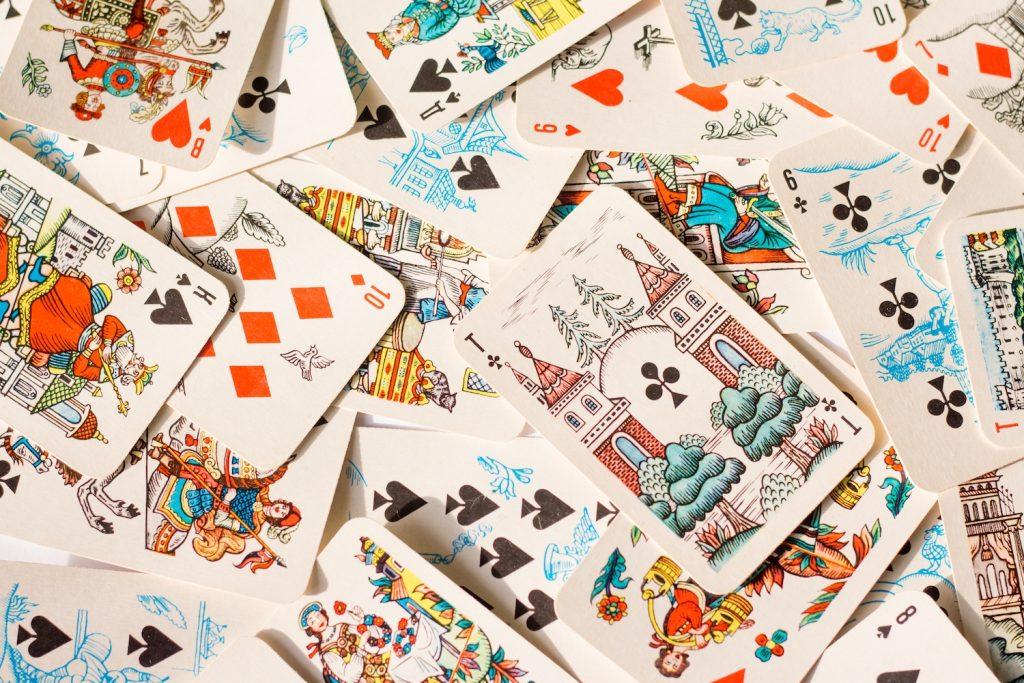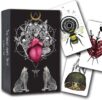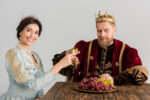The Intriguing World of Playing Card Symbolism
Playing cards, those familiar companions of game nights and gatherings, possess a deeper significance beyond their role in entertainment. These simple yet intricate cards often serve as silent messengers of culture, history, and artistry. Let’s decode the symbolism woven into playing cards and uncover the meanings that numbers, suits, art, and contemporary culture create. Each card reveals a story that connects us to traditions from around the world, fostering unity through the shared language of play.
Playing Cards as Mirrors of Culture
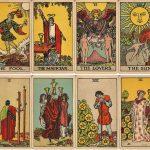 Across the world, playing cards serve as mirrors reflecting the essence of societies. A striking example can be found in the East, where playing cards often blend mysticism and gameplay. The Tarot deck, originating in Europe but embraced globally, stands as a testament to the fusion of spiritual insights with entertainment. The intricate imagery adorning each card corresponds to various esoteric teachings, creating a bridge between divination and leisure.
Across the world, playing cards serve as mirrors reflecting the essence of societies. A striking example can be found in the East, where playing cards often blend mysticism and gameplay. The Tarot deck, originating in Europe but embraced globally, stands as a testament to the fusion of spiritual insights with entertainment. The intricate imagery adorning each card corresponds to various esoteric teachings, creating a bridge between divination and leisure.
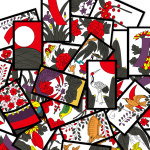 Similarly, Japan’s Hanafuda deck embodies a unique fusion of nature and spirituality. The cards, adorned with vibrant flower motifs, act as a conduit for meditation and contemplation. Beyond mere gameplay, these cards enable players to engage with the deeper meanings that nature holds, forging a connection between cultural values and leisure activities.
Similarly, Japan’s Hanafuda deck embodies a unique fusion of nature and spirituality. The cards, adorned with vibrant flower motifs, act as a conduit for meditation and contemplation. Beyond mere gameplay, these cards enable players to engage with the deeper meanings that nature holds, forging a connection between cultural values and leisure activities.
The image at the top of this article shows playing cards based on Russian popular prints, published by the Leningrad Color Printing Plant in 1990, Artist Viktor Sveshnikov.
The Language of Numbers and Suits
Numbers and suits on playing cards often carry cultural meanings, serving as a symbolic language. The selection of suits itself can offer insights into cosmological and societal hierarchies. In Western decks, the heart, diamond, club, and spade represent distinct social strata – the clergy, aristocracy, peasantry, and military, respectively. In contrast, Eastern decks like the Chinese Mahjong cards integrate traditional symbolism seamlessly into the gameplay experience. The use of circles, bamboos, and characters in these decks intertwines cultural heritage with recreational engagement.
The numbers on cards also contribute to the layers of symbolism. The number 7, for instance, often signifies luck in certain cultures, while it might convey an entirely different concept elsewhere. This dynamic interplay of numbers and suits offers a fascinating window into the nuances of cultural values and interpretations.
The suits in Indian Ganjifa cards are often adorned with depictions of animals, mythological figures, and deities. Lotería, a Mexican card game, features cards adorned with colorful images that hold cultural references. The heart, for instance, represents friendship, while the sun symbolizes vitality. In Chinese culture, the suits of bamboo, circles, and characters in Mahjong cards carry deep symbolic meanings. Bamboo represents growth and flexibility, circles symbolize unity and harmony, and characters reflect knowledge and wisdom.
Playing Cards as Art
The creativity of playing cards reach beyond geographical boundaries, serving as canvases that reflect a culture’s artistic heritage. The Mamluk deck, hailing from Egypt, showcases intricate calligraphy and geometric patterns inspired by Islamic art. Each card is a masterpiece, carrying echoes of a rich historical legacy. In India, Ganjifa cards are miniature masterworks, depicting mythological tales and historical narratives through intricate paintings. These cards go beyond mere gameplay; they embody the spirit of storytelling, preserving culture through artistry.
In Europe, the Renaissance-inspired designs on playing cards offer a glimpse into the artistic sensibilities of the time. These decks are a fusion of aesthetics and functionality, with ornate illustrations gracing each card. As these artistic expressions traverse continents, they speak a universal language that resonates with both the aesthetic and cultural preferences of different societies.
Today, playing card art is undergoing a resurgence with some beautiful designs on offer. I subscribe to a few newsletters that feature the latest in playing card art and love receiving the emails weekly. Here are a few of my favourite shops (below) and you can find more on our Playing Cards page.
The Ellusionist – playing cards for magicians and playing card art enthusiasts
Theory 11 – here you’ll find some of the most beautiful playing cards in the English-speaking world
Design and Culture
Playing card symbolism echoes in modern culture, shaping creativity across different forms. Film, literature, fashion, and music all draw inspiration from the imagery of playing cards, infusing them with new meanings. Iconic movies like “Alice in Wonderland” and “Casino Royale” strategically utilize card symbolism to create visual metaphors that resonate with audiences. Fashion designers incorporate card motifs into their creations, providing a tangible link between traditional symbols and modern attire.
In literature, playing card symbolism explores themes of fate, chance, and choice. These cards serve as versatile metaphors, connecting cultures and eras. Even in the ever-evolving realm of music, references to playing cards evoke a sense of familiarity and connection, uniting listeners through shared cultural references.
A Universal Bond in Cards
In the world of playing cards, we find a rich tapestry of cultural meaning that crosses borders. These cards connect diverse cultures and eras through the joy of play. By exploring numbers, suits, art, and modern interpretations, we witness unity amidst diversity. Playing cards offer a common language in our diverse world.
Beneath the symbolism lies a universal tie that unites us. Holding a deck of cards means holding a mosaic of cultures and values. The symbols on these cards invite us to celebrate our shared humanity and embrace our global heritage. What other item on earth holds all this richness?
Many of us were introduced to playing cards as young children. I remember loving my own deck, like a tiny picture book – playing games with my brothers, building card houses, telling stories using the face cards. And when I started school, I learned to add using the position of pips on cards (and on die but that’s a different tale) – even today when I count six in my head, I count two rows of three. Five maybe be an abstract concept but my head sees a group of four pips with another in the middle.

